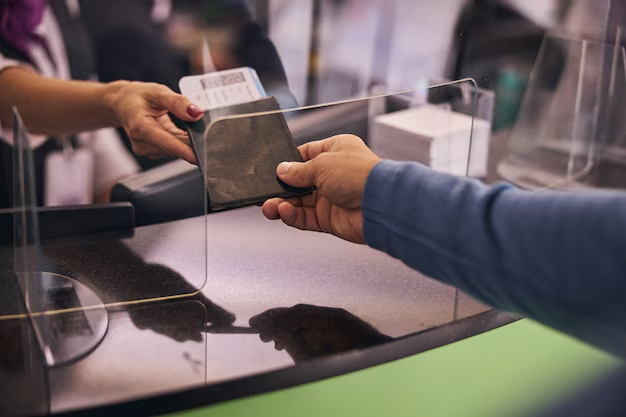Where to Cash a Wells Fargo Check: Your Complete Guide
Are you holding a Wells Fargo check and wondering where to cash it? You're not alone. Many people find themselves puzzled by the options available and the best approach to handle their financial transactions. Whether you're looking to conveniently access your funds or want to avoid unnecessary fees, understanding your options is key. This comprehensive guide will explore various avenues for cashing a Wells Fargo check, their benefits, and possible considerations.
🏦 Traditional Banks: The Go-To Option
1. Wells Fargo Branches
Perhaps the most straightforward option is to cash your check at a Wells Fargo branch. If you're an account holder, you can easily access your check's value by depositing it directly into your account or requesting cash. Even if you're not a customer, Wells Fargo branches still provide the service of cashing their checks, although there might be a fee involved.
Advantages:
- Direct Access: Immediate funds access if you deposit it into your account.
- Customer Support: Trained staff available to assist you with your transaction.
Considerations:
- Be prepared to show valid identification, and be aware that fees might apply for non-account holders.
2. Other Banks and Credit Unions
You can often cash a Wells Fargo check at other banks where you hold an account. These institutions typically offer the service free of charge, as long as the funds are deposited into your account. Some credit unions also provide this service, often catering to members with favorable terms.
Advantages:
- Convenience if you already have an account with the bank.
- Secure and potentially free transactions.
Considerations:
- Policies might vary, and some institutions charge a fee for non-members or non-account holders.
🏬 Retail Options: Convenience at a Cost
1. Major Retail Stores
Big-box retailers such as Walmart offer check-cashing services. They usually charge a nominal fee based on the value of the check, providing a quick way to obtain cash when banks are less accessible.
Advantages:
- Convenient: Retail locations are widespread and often have extended hours.
- Accessibility: Can be handy when there's no bank nearby.
Considerations:
- Service fees may apply, and there could be a maximum check amount threshold.
2. Check Cashing Services
Dedicated check-cashing establishments offer quick services with fewer requirements. These venues usually impose higher fees but provide fast cash access, often without the need for a bank account.
Advantages:
- Speed: Quick cash in hand without much delay.
- Minimal Requirements: Less stringent identification or customer status checks.
Considerations:
- Typically higher fees than banks or retailers.
📱 Digital and Mobile Solutions
1. Mobile Banking Apps
If you already bank with Wells Fargo, using their mobile app to photo-deposit checks is a convenient option. Simply endorse the check, snap a photo with the app, and have it deposited into your account electronically.
Advantages:
- Ultimate Convenience: Deposit from anywhere and at any time.
- Secure Processing: Transactions protected under bank security measures.
Considerations:
- Requires time for processing before funds are available.
- Needs access to a smartphone and a stable internet connection.
2. Remote Check Deposit Services
Remote deposit services offered by non-bank financial apps provide another way to cash checks. These may allow depositing to an online account where funds can be transferred to a traditional bank account.
Advantages:
- Provides a digital way to handle checks.
- Useful for those without local banking options.
Considerations:
- Fees could apply, and service terms vary by provider.
🔍 Additional Insights
When handling checks, always consider these practical tips:
- Verify the Check: Ensure all parts of the check are complete and verify its authenticity.
- Understand the Fees: Be clear on any fees that might be involved in cashing checks, especially if done frequently.
- Keep Records: Maintain an accurate record of all transactions for personal finance tracking and dispute resolution.
📌 Quick-Reference Guide: Cashing Wells Fargo Checks
Here's a handy overview, summarizing your options:
| Option | Pros | Cons |
|---|---|---|
| Wells Fargo Branch | Direct access to funds, customer support. | Non-holder fees, needs ID. |
| Other Banks/Credit Unions | Free or low-fee if account holder. | Varies by institution. |
| Major Retail Stores | Widespread, often open late. | Service fees. |
| Check Cashing Services | Quick cash without an account. | High fees. |
| Mobile Banking Apps | Convenient and secure. | Processing time, needs smart device. |
| Remote Deposit Services | Digital convenience. | Fees, service variability. |
Making the Best Choice
Selecting the right option involves weighing your immediate needs against potential costs and convenience levels. For some, the efficiency and safety of traditional banks overshadow the marginal fees, while others may opt for retail convenience if they're frequently on the move.
When making your decision, consider factors such as the proximity of services, the amount of the check, and your transaction frequency. Flexibility can lead to substantial time and money savings.
🚀 Empowering Your Check Cashing Strategy
Understanding how to cash your Wells Fargo check sets the foundation for better financial management. By tailoring your approach to align with your lifestyle and financial habits, you're better positioned to maximize both convenience and cost-efficiency.
Remember, the key to mastering check cashing lies in investigating your options, identifying what aligns best with your circumstances, and being mindful of fees. Through informed choices, you transform a routine financial task into a seamless component of your day-to-day finances.

Related Topics
- a Que Hora Abren Wells Fargo
- a Que Horas Cierran El Banco Wells Fargo
- Can I Close a Wells Fargo Account Online
- Can I Close My Wells Fargo Account Online
- Can I Close Wells Fargo Account Online
- Can I Deposit Cash At Wells Fargo Atm
- Can I Open a Roth Ira Through Wells Fargo
- Can You Cancel Subscriptions Through Wells Fargo
- Can You Deposit Cash At An Atm Wells Fargo
- Can You Deposit Cash At Wells Fargo Atm